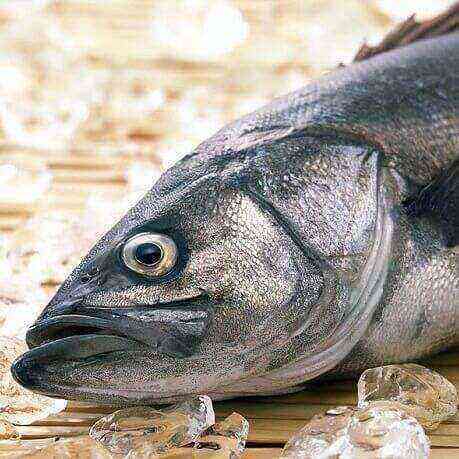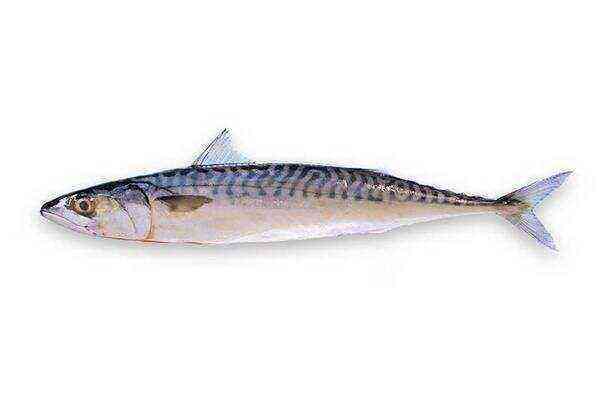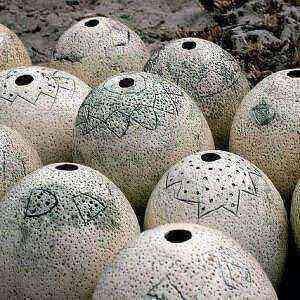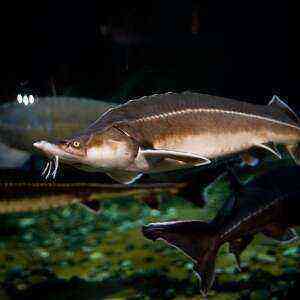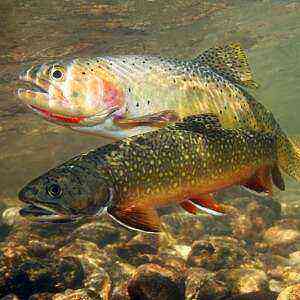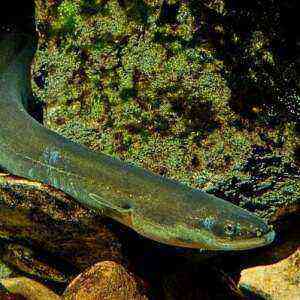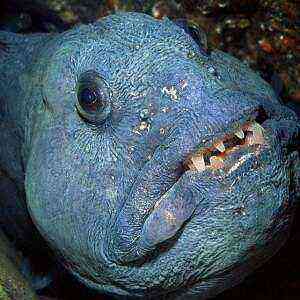
General characteristics
Catfish is a sea fish from Perch. It is mainly found in the north of the Atlantic Ocean, near Russia, Canada and even in the western zone of the Arctic. This cold-water fish feels comfortable in waters with temperatures below 5 degrees. He spends most of his time in ocean waters at depths of 400 to 1200 meters below sea level. Rises to the surface in search of food.
Catfish is a predatory fish. Her diet consists of smaller inhabitants of the ocean: sea urchins, crabs, starfish. At depths, jellyfish and smaller fish become their food. The peculiarity of these fish is sharp as knives teeth, due to which they retain their dominant role in the oceans. And it is thanks to these terrifying teeth that the fish got its name. And her middle name is the sea wolf: like this animal, on the amazingly developed jaw of the fish there are fangs and teeth protruding forward, wrapped inward.
Adult representatives can reach more than a meter in length and weigh more than a centner. There are several types of catfish and they all differ in color. They can be from dark gray to dark brown or even purple.
Types of Catfish
Acne. Its range is the coast of North America: from Alaska to California.
Far Eastern. It is found in the Pacific Ocean, mainly in its northwestern part.

Striped Adults reach 22 kilograms and exceed one and a half meters in length. Distributed in the waters of the White and Barents Seas, near England, Ireland. Prefers a rocky bottom. The fillet is quite firm. It differs from other species in dark vertical stripes on its sides.
Spotted (mottled). This one and a half meter giant is found in northern waters. The sides and fins are covered with dark spots. The pulp is quite dense
Adult catfish, if I may say so, leads a sedentary lifestyle, moves along the bottom only in exceptional cases. But young growth almost continuously “plows” the ocean.
In the spawning period, which occurs in catfish in the summer, females lay up to 30 thousand eggs. A rather large caviar of this fish settles on the rocky surfaces of the bottom.
The life expectancy of this fish is about 12 years. Having reached maturity (for 4-5 years of life), young catfish settle on the seabed and go on to the usual way of life for adult relatives.
Commercial fishing is one of the most important aspects of the global economy. Catfish also do not pass fishing nets. Recently, in addition to the traditional fishing grounds – the Barents Sea and the coast of Northern Norway, catfish are artificially bred. But it is difficult to say that this northern fish is the most popular for industry. Some do not like her meat due to excessive water content. Another reason for the low industrial popularity is the inaccessible habitats of these predators. To get a catch from deep water is too expensive a pleasure. But this does not mean that there are no people in the world who want to feast on her fillet. Moreover, the chefs know the secrets of how to cook it, and the researchers claim that it is a healthy fish.
Useful Properties
Source of vitamins
Vitamins are the nutrients the human body needs daily. Therefore, their stocks should be replenished regularly and properly. And catfish is a good source of some of them.

Vitamin B1 is important for the transformation of food into energy, the synthesis of nucleic acids and the conductivity of nerve impulses depend on it. An adult from a 100-gram catfish fillet will receive 12% of the vitamin of the norm.
Vitamin B2 in 100 grams of fish is equivalent to 5% of the RDA for adults. And this is also one of the advantages of catfish, because without adequate portions of B2, other vitamins of the group – B6 and B9, could not be converted into active forms. Also, this vitamin found in fish is important for protecting cells from free radicals.
Vitamin B3 is a water-soluble vitamin that has the fame of a defender against diabetes and cancer. A little more than a tenth of the daily intake is contained in 100 g of fish, which makes catfish a product that is important for the prevention of many diseases.
Vitamin B5, which is part of the chemical composition of catfish fillet (100% of the daily norm in 6 grams), makes this fish useful for lowering cholesterol and triglycerides in the blood, for faster healing of wounds and prevention of rheumatoid arthritis.
Vitamin B9 is the substance that makes catfish extremely beneficial for pregnant women. B9 makes fish important for the digestive system, kidneys, eyes, skin and hair.
Vitamin B12 is one of the most important nutrients of group B. The correct formation of blood cells and the health of the nervous system depend on it. The fillet portion of this marine predator contains an impressive 34% of the daily value.
Mineral source
The human body, along with vitamins, needs many minerals that determine the quality of many processes in the body: from creating bone tissue to transmitting nerve impulses. Catfish fillet contains large portions of potassium, phosphorus, sodium, as well as some other useful components.
Calcium. It is thanks to this mineral that catfish is considered useful for strengthening bones and teeth, preventing osteoporosis and other bone diseases. In addition, calcium is crucial for the proper functioning of the heart muscle and healthy metabolism. In the human body, calcium is about 2% of the total body weight. Catfish meat will help maintain this indicator.
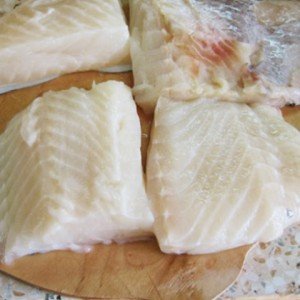
Sodium, interacting with chlorine and potassium, maintains a balance of fluid and acidity in the body. This element, contained in the meat of a marine predator, is important for the transmission of nerve impulses and the correctness of muscle contractions.
In addition, zinc makes this product useful for immunity, and copper – for the production of the required amount of collagen. Another useful component of catfish is manganese. This substance is necessary for the formation of connective tissue, the proper functioning of the thyroid gland. Magnesium affects metabolic activity, the production of sex hormones, the absorption of calcium and the maintenance of blood sugar.
And another interesting fact about the beneficial properties of catfish meat. Many find it useful in preventing cancer. In particular, thanks to selenium, a substance known as an effective anti-cancer agent. By the way, the reserves of selenium in this fish are very large – 52% of the daily allowance (in 100 g of fillet). It is important to note that selenium is also useful for antiviral protection, increasing female fertility, and regulating the thyroid and immune systems.
Speaking about the useful components of catfish, one cannot but recall mono- and polyunsaturated fatty acids. Researchers call these substances one of the main for the cardiovascular system. In particular, omega-3 fatty acids are the substances that cardiologists advise to use seafood at least 2 times a week in order to strengthen the heart and blood vessels, lower cholesterol and prevent coronary heart disease.
Nutritional value at 100 g
Caloric content 96 kcal Proteins 17,7 g Fats 2,39 g Carbohydrates 0 g Cholesterol 46 mg Water 79,9 g Vitamin A 0,06 mg Vitamin B1 0,18 mg Vitamin B2 0,07 mg Vitamin B3 2,1 mg Vitamin B5 0,56 mg Vitamin B9 9,2 mg Vitamin B12 2,03 mg Sodium 85 mg Potassium 300 mg Calcium 6,2 mg Phosphorus 202 mg Zinc 0,78 mg Copper 0,02 mg Manganese 0,02 mg Iron 0,09 mg Selenium 36,5 μg Cobalt 30 mg Molybdenum 0,04 mg Fluorine 0,04 mg Magnesium 35 mg Chromium 0,05 mg Chlorine 165 mg Sulfur 190 mg Iodine 0,05 mg
Use in cooking

Catfish fillet is pearl white, non-greasy, almost boneless, and tastes a bit like cod or halibut meat, but with a sweet aftertaste. Due to this similarity, cod or halibut can be replaced with catfish in many recipes. It is well suited for baking, frying, steaming or grilling, and excellent meatballs are obtained from minced fish. It goes well with the aromas and taste of garlic, onions, tomatoes, peppers, parsley, olive oil, mussels, as well as white or pink wine.
Very tender and soft fillet (in some fish species it is even jelly-like) is the reason why many refuse to cook catfish. Meanwhile, if you know a little secret, the cooking process will be much easier. So, to give the fillet a shape and a dense texture, pour half a hour before cooking with a 10 percent solution of sodium chloride. Then the fish is cooked, as usual, but preferably with the skin (it will maintain the shape of the piece). Another way to maintain a beautiful shape is to boil a little fish in very salt water before frying. But in any case, it’s not advisable to fry a catfish under a closed lid – the fillet will spread into slurry. Before stewing, the fillets are divided into rather large pieces, dipped in flour and fried. It is recommended to bake this marine predator in foil or in parchment with tomatoes (their acidity will make the fillet more elastic).
Grilled with oregano

With tomatoes, lemon and potatoes
For 4 pieces of catfish (approximately 150 g each) you will need 1 kilogram of potato, shallots, garlic, juice of 2 lemons, bay leaf, 300 g of cherry tomatoes, a little coriander, chili pepper, olive oil, salt and pepper.
In a pan, put peeled and halved potatoes (preferably young, small), whole cherry tomatoes, chopped shallots, coriander, garlic (chopped), lemon juice, bay leaf, chili pepper and ground black, salt, 2 tablespoons olive oil and 100 ml of water. Cover the pan and cook for 40-50 minutes on very low heat (periodically check that the vegetables are not burnt, you can add a little more water if necessary). Then grate the fillet with salt and other spices, drizzle with olive oil, put on top on vegetables and cook everything together for another 10-15 minutes.
How to choose and store
Catfish is chosen according to the same rules as other fish. Her eyes should be clear, without a dull “curtain”. Fresh meat is resilient and light, it springs under the fingers and quickly returns to its former shape.
In the freezer, the fish will retain its taste and nutritional properties for 2 months. In the refrigerator, fresh fillets are stored for no longer than two days, and it is advisable to eat dishes from catfish during the day.
What else is catfish useful for
In many cultures, sport fishing has been a form of entertainment for centuries. The objects of such hunting are, as a rule, predatory fish, including catfish. Sport fishing for this marine resident is common in the vicinity of Argentina, Canada and some other countries of the northern region. The strong and dense skin of this marine predator is used to make handbags, wallets and belts.
The terrifying appearance and nature of catfish allows her to get away from other marine predators, but not from people. The mass extermination of catfish, according to researchers, can significantly disrupt the marine ecosystem.
Catfish may not be the most beautiful fish in the depths of the sea, but it is very useful, and if properly cooked, it is divinely delicious.














